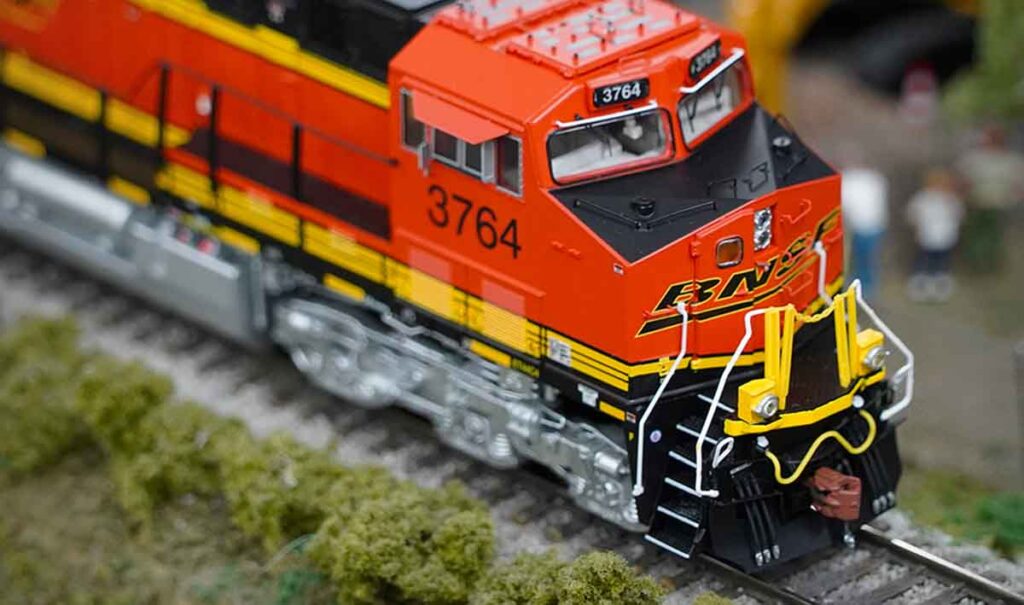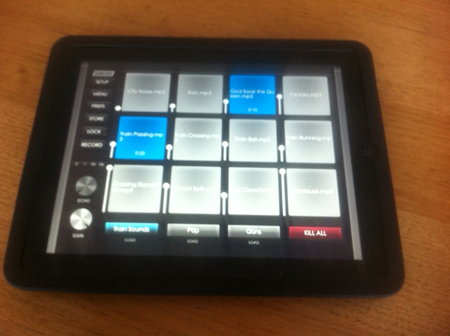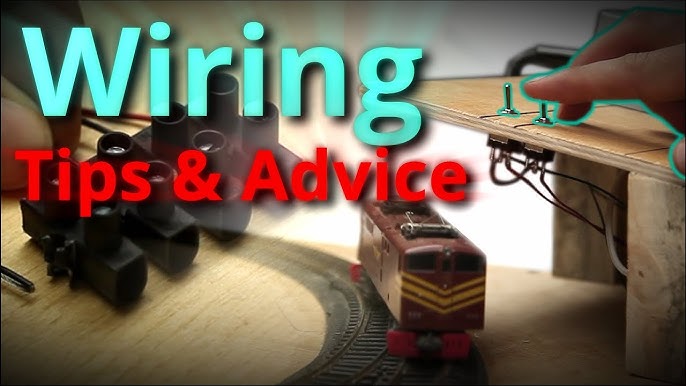Have you ever wondered how to bring your model train layout to life with sound and lighting effects? Adding these features can enhance the overall experience and make your display even more captivating. From realistic train sounds to flickering streetlights, there are various ways to incorporate these effects into your layout. In this article, we will explore some simple yet effective methods that you can use to add sound and lighting effects, allowing you to create an immersive and impressive model train experience.

Choosing the right sound and lighting effects
When it comes to adding sound and lighting effects to your model train layout, it’s important to consider the scale and theme of your layout. The size and style of your model train layout will determine the type and intensity of the sound and lighting effects that are suitable.
Before you start adding sound and lighting effects, it’s essential to do some research and explore the available options. There are many different sound and lighting modules and systems on the market, each offering unique features and capabilities. Take the time to read reviews, watch videos, and even visit model train exhibitions to see the effects in action.
It’s crucial to determine the desired ambiance and effects for your model train layout. Do you want a busy city scene with bustling sounds of traffic and bright lights? Or perhaps a serene countryside setting with gentle sounds of nature and subtle lighting? Defining the mood and atmosphere will guide your choices in sound and lighting effects.
Adding sound effects
To add sound effects to your model train layout, you’ll need to install speakers or sound modules. Depending on the size of your layout, you might need multiple speakers strategically placed to achieve an immersive experience. Sound modules are available in various sizes and can be hidden beneath the layout or mounted on the side.
Once you have the speakers or sound modules in place, it’s time to select appropriate sound clips or recordings. You can find a wide range of sound effects specifically designed for model trains, including train whistles, steam engine sounds, passenger announcements, and ambient noise. Choose sounds that complement your layout’s theme and create a realistic and captivating experience.
Integrating the sound effects with train movements will enhance the overall realism of your model train layout. You can synchronize the sound effects with the speed and movements of your trains using control systems or manually triggered switches. For example, as a train approaches a station, you can activate the sound of brakes screeching to simulate the halt.
Implementing lighting effects
To bring your model train layout to life, lighting effects play a crucial role. LED lights or light strips are commonly used to illuminate various areas of the layout. These lights are energy-efficient, versatile, and available in different colors and brightness levels. Installing LED lights or light strips is relatively straightforward and can be easily concealed to create a seamless look.
Choosing the right colors and brightness levels for your lighting effects is important to create the desired atmosphere. Warm white lights can mimic the glow of street lamps or the interior lighting of passenger cars, while cool white lights can simulate the brightness of fluorescent lights in a train station. Additionally, RGB LED lights allow you to change colors and create dynamic lighting effects.
Creating different lighting scenarios can add depth and realism to your model train layout. You can simulate the transition from day to night by gradually dimming the lights, or add flickering effects to simulate candlelight or electrical malfunctions. By strategically placing lights in different areas, you can highlight specific features of your layout, such as buildings, landscapes, or tunnels.
Powering the sound and lighting effects
Before diving into adding sound and lighting effects, it’s crucial to determine the power requirements for your layout. Different components may have varying power needs, so it’s essential to understand the electrical demands of the sound and lighting modules you plan to use. This will ensure that you have a proper power supply and prevent any electrical issues or damage.
Dedicated power sources or transformers are commonly used to power sound and lighting effects in model train layouts. These devices convert the electrical current from your household power outlet into a safe and suitable voltage for your layout. When selecting a power source or transformer, make sure it can handle the combined power requirements of all your sound and lighting components.
Considering wiring and voltage considerations is also important to ensure the efficient and safe operation of your layout’s sound and lighting effects. Make sure to use appropriate wiring, connectors, and insulation to prevent any short circuits or electrical hazards. It’s a good practice to consult the manufacturer’s guidelines and follow recommended wiring practices.

Controlling sound and lighting effects
There are various methods to control the sound and lighting effects in your model train layout, ranging from manual switches to advanced remote control systems. Manual switches or buttons can provide a hands-on approach and allow you to activate specific effects at your discretion. This can be useful if you prefer a more interactive experience or want precise control over each effect.
Alternatively, utilizing remote control systems can provide convenience and flexibility in managing the sound and lighting effects. With a remote control, you can trigger specific effects or adjust settings from a distance, avoiding the need to reach under the layout or access hard-to-reach areas. Some remote control systems even offer programmable features, allowing you to create custom sequences.
To further enhance the immersion and realism of your model train layout, you can integrate sound and light synchronization with train control. This can be achieved by using digital command control (DCC) systems, which allow you to control both the trains and the associated sound and lighting effects from a single control panel. With DCC, you can synchronize the sound of a steam engine with its actual movement or trigger lighting effects as the train passes specific sensors.
Safety considerations
While adding sound and lighting effects to your model train layout can be exciting, it’s crucial to prioritize safety to prevent any accidents or damage. Here are a few safety considerations to keep in mind:
Preventing electrical hazards: Ensure that all electrical connections are secure, insulated, and free from any exposed wires. Regularly inspect your layout and components for any signs of wear or damage. If you notice any issues, make the necessary repairs or replacements promptly.
Ensuring proper ventilation and heat dissipation: Some sound and lighting modules may generate heat during operation. It’s important to allow for proper ventilation to prevent overheating. Consider installing small fans or providing adequate airflow to dissipate the heat effectively.
Using fire-resistant materials and components: When designing and constructing your layout, choose materials that are fire-resistant. Avoid placing flammable objects near sound and lighting modules, and make sure that all components are certified for safe operation.
By following these safety considerations, you can enjoy your model train layout with peace of mind and prevent any potential safety hazards.

Maintenance and troubleshooting
To keep your sound and lighting effects functioning properly, regular cleaning and maintenance are important. Dust and debris can accumulate on speakers, lights, and other components, affecting their performance. Use a soft brush or compressed air to gently remove any dust or particles from the surface of the components.
If you encounter any issues with your sound or lighting effects, it’s essential to identify and fix common problems. Loose connections, faulty wiring, or dead bulbs are common culprits. Check all the connections and wires, and replace any faulty components as needed. It’s also helpful to consult the user manuals or online resources for troubleshooting tips specific to your sound and lighting modules.
In some cases, seeking professional help may be necessary if you’re unable to resolve the issues on your own. Professional model train technicians or electricians have the expertise and experience to diagnose and fix complex problems, ensuring that your sound and lighting effects are functioning optimally.
Enhancing the realism of sound and lighting
To take your model train layout to the next level, you can enhance the realism of the sound and lighting effects in various ways. Here are a few ideas to consider:
Adding background sounds or ambient noise: In addition to the sound effects directly associated with the trains, adding background sounds or ambient noise can create a more immersive experience. For example, the sound of chirping birds, flowing water, or distant traffic can bring your layout to life and make it feel more realistic.
Creating realistic lighting effects based on the time of day: To emulate the natural lighting changes throughout the day, you can program your lighting effects to adjust based on the time of day. Dim the lights during dawn or dusk, and simulate a brighter midday sun. This will add another layer of authenticity to your model train layout.
Installing special effects like steam, smoke, or fog machines: For a truly captivating experience, consider installing special effects devices like steam generators, smoke machines, or fog machines. These can create the illusion of real steam locomotives or add an atmospheric touch to your layout. Ensure proper ventilation and follow manufacturer’s guidelines when using these devices to maintain safety.

Incorporating automation and smart technology
With the advancement of technology, incorporating automation and smart technology into your model train layout is now easier than ever. Here are a few ways to explore automation and enhance control and convenience:
Exploring automated control systems: Automated control systems allow you to program and schedule various sound and lighting effects. This means you can create complex sequences or realistic scenarios without constantly manually triggering each effect. Automated control systems can also synchronize sound and lighting effects with the movements of your trains for a more immersive experience.
Integrating sound and lighting with computer software: Computer software designed for model train layouts can provide advanced control and customization options. By connecting your layout to a computer, you can create dynamic lighting effects, synchronize sounds with train movements, and even control your layout remotely.
Utilizing smart home technology for enhanced control and convenience: If you have a smart home setup, you can utilize smart plugs or voice-activated assistants to control your model train layout’s sound and lighting effects. With a simple voice command or a tap on your smartphone, you can turn on specific effects, adjust brightness levels, or change the color of your lighting.
By incorporating automation and smart technology, you can take your model train layout to the next level of convenience and customization, creating a truly unique and immersive experience.
Inspiration and creative ideas
If you’re looking for inspiration to design your sound and lighting effects, exploring other model train layouts can be a great starting point. Visit model train exhibitions, join model train communities, and read magazines or books dedicated to model railroading. You can gather ideas, see what others have done, and adapt those ideas to fit your own layout.
Don’t be afraid to let your creativity shine through when designing unique sound and lighting effects for your layout. Think outside the box and experiment with different combinations and settings. Create a storyline or theme for your layout and let the sound and lighting effects enhance the narrative. Remember, the possibilities are endless, and your imagination is the only limit.
In conclusion, adding sound and lighting effects to your model train layout can greatly enhance its realism and create a captivating experience. By considering the scale and theme of your layout, researching available options, and determining the desired ambiance and effects, you can make informed decisions and bring your layout to life.
Installing speakers or sound modules, selecting appropriate sound clips, and integrating sound effects with train movements will provide an immersive audio experience. Similarly, installing LED lights or light strips, choosing suitable colors, and creating different lighting scenarios will enhance the visual aspect of your layout.
To ensure safe and efficient operation, determine the power requirements, use dedicated power sources or transformers, and consider wiring and voltage considerations. Control the sound and lighting effects using manual switches or remote control systems, and integrate them with train control for synchronized effects.
Prioritize safety by preventing electrical hazards, ensuring proper ventilation, and using fire-resistant materials. Regular maintenance and troubleshooting will keep your sound and lighting effects in optimal condition, and incorporating automation and smart technology can provide enhanced control and convenience.
Finally, gather inspiration from other layouts, use creativity to design unique effects, and don’t hesitate to experiment with different combinations and settings. With these tips and ideas in mind, you’re well on your way to creating a model train layout that is both visually stunning and audibly captivating. Enjoy the journey!


